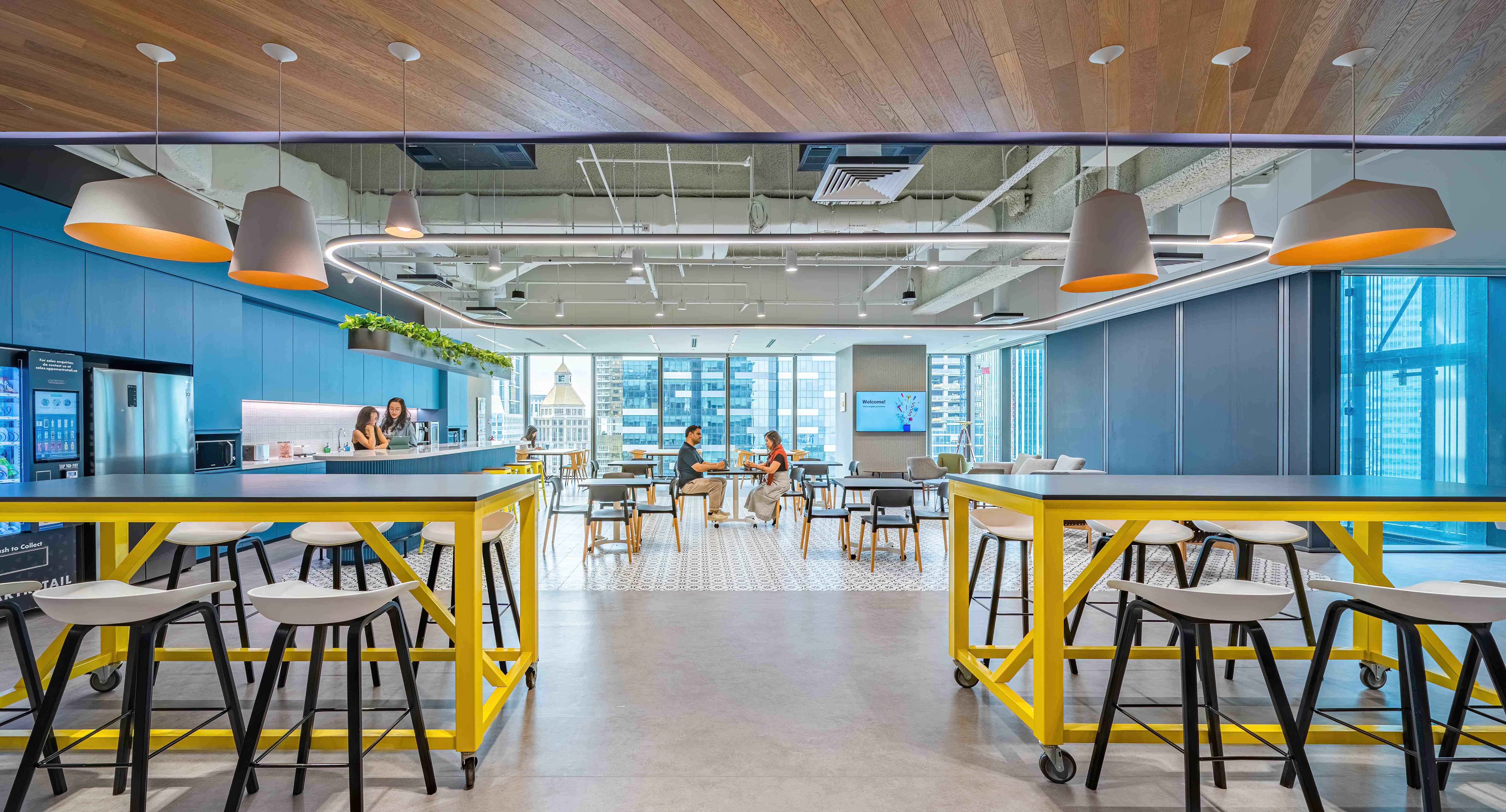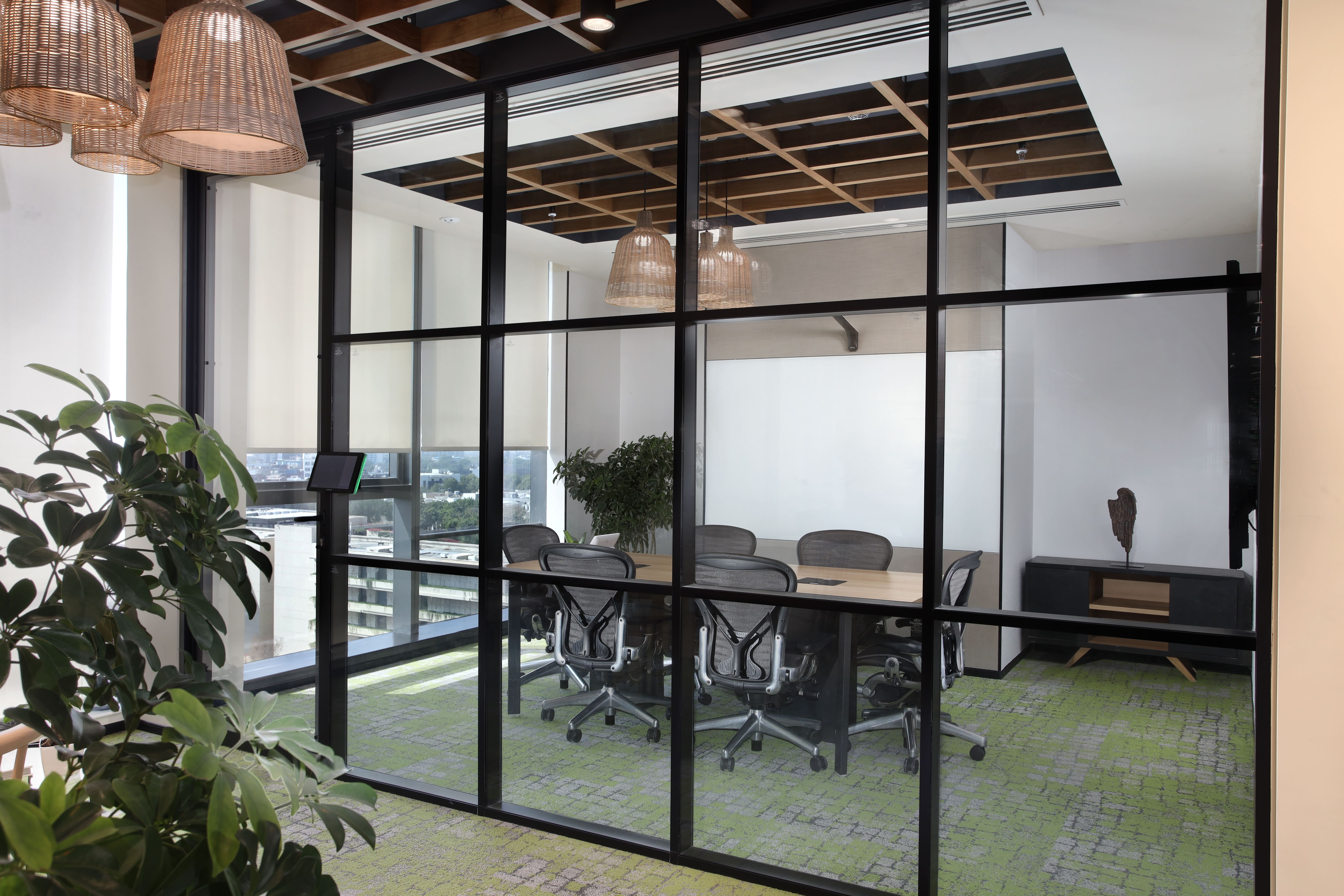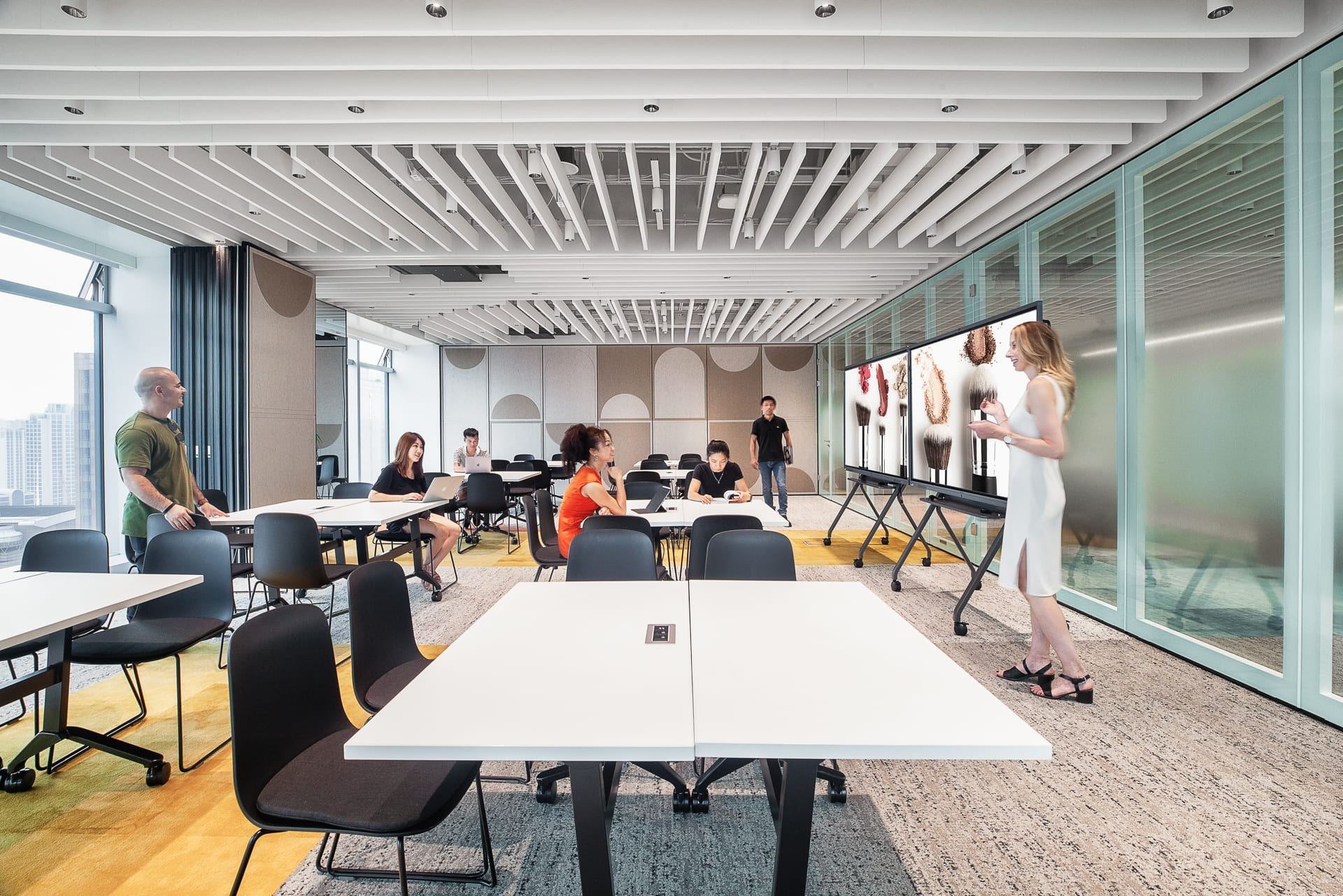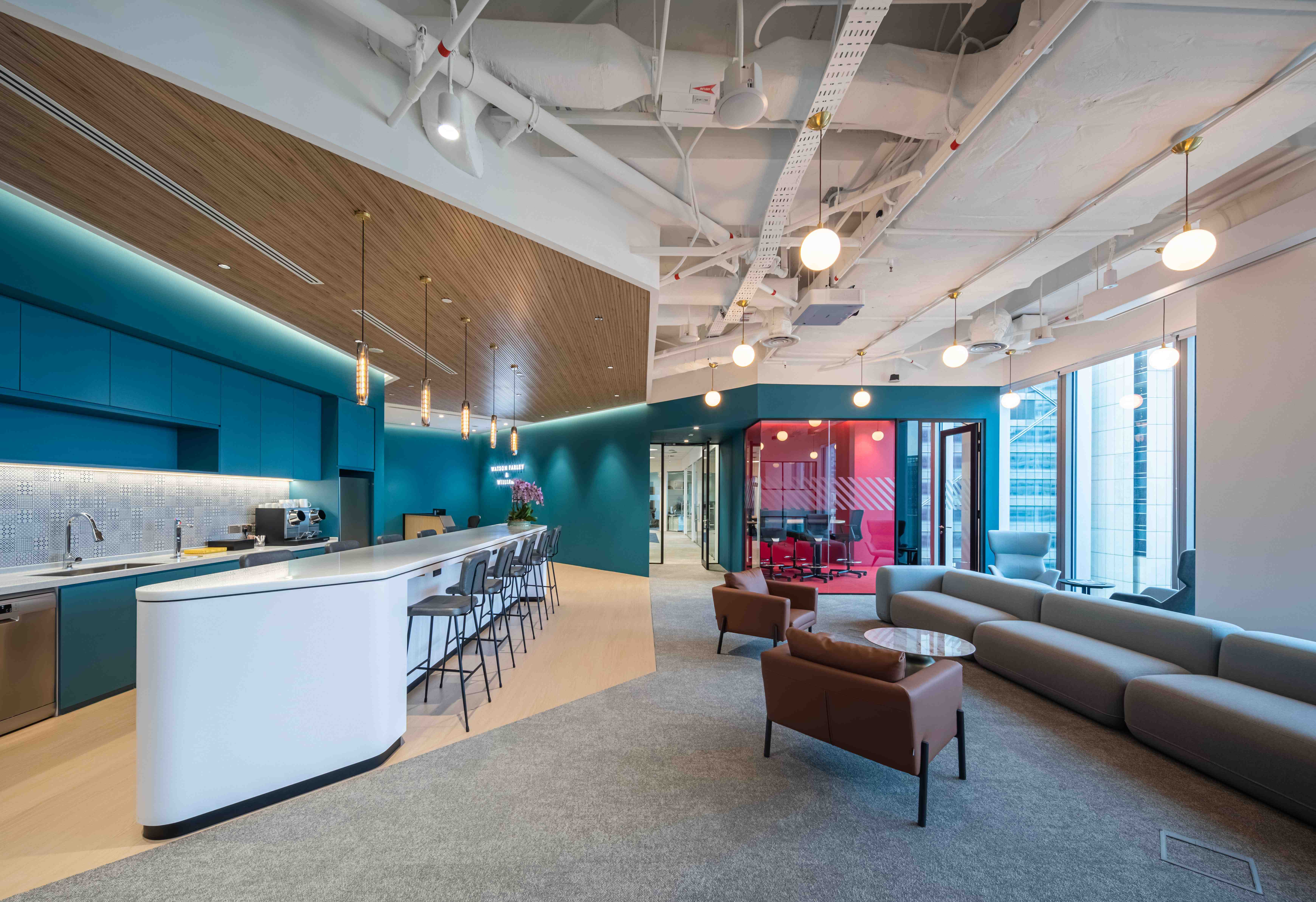
How Workplace Design, Technology, and Culture Shape Modern Organisations
In the landscape of contemporary workplaces, the importance of workplace design goes beyond aesthetics; it serves as a driving force in shaping organisational culture. Let’s explore how innovative workplace design, in synergy with workplace technology, plays a crucial role in empowering employees, fostering collaboration, and ultimately impacting the overall success of organisations.
Empowering Autonomy and Choice
The freedom to choose your workplace based on what suits your tasks best - that's the power of workplace design combined with technology.
-
Personalised workspaces
Innovative designs, such as those with adjustable desks and ergonomic chairs, empower employees to personalise their workspaces. This personalisation fosters a sense of ownership, autonomy, and individuality, contributing to a culture that values the uniqueness of each team member.
-
Flexible work environments
The adaptability of the workspace to different tasks and workstyles promotes a culture of flexibility and responsiveness. Employees can choose settings that suit the nature of their work, supporting a dynamic and agile organisational culture.
Gartner, for instance, lets employees customise their workspaces with adjustable desks and ergonomic chairs. This autonomy promotes a sense of ownership and empowerment, showcasing a culture that values individuality and excellence. When employees control their physical space, they feel more motivated and engaged.

Enhancing Workplace Collaboration
Collaboration is crucial for any organisation's success, and the right mix of workplace design and technology can make it happen seamlessly every day.
-
Technology-enabled collaboration
Beyond physical spaces, the integration of technology enhances collaboration. Video conferencing, digital whiteboards, and virtual collaboration tools create an interconnected environment, making teamwork seamless and reinforcing a culture that values shared knowledge and collective problem-solving.
-
Innovative meeting spaces
Designing collaborative zones that encourage spontaneous interactions and brainstorming sessions nurtures a culture of innovation. These spaces, equipped with cutting-edge technology, become hubs where ideas flourish and contribute to the organisation's overall innovative spirit.
BCG's 'Case Team Rooms' are a great example of how technology can enhance teamwork. These rooms are equipped with video conferencing capabilities and smart whiteboards, making it easy for teams to communicate and collaborate effectively. Spaces like these, combined with technology, become hubs for collaboration, reflecting an organisational culture that values teamwork, synergy, and success.

Fostering a Global Community
Technology in the workplace breaks down physical barriers, allowing teams from different corners of the world to come together digitally and create immersive experiences.
-
Digital inclusivity
Technology-driven workplace design facilitates inclusivity on a global scale. Digital meeting spaces help in fostering a sense of belonging among employees regardless of their physical location.
-
Cultural integration
Incorporating elements of diverse cultures within the physical workspace and leveraging technology for cross-cultural communication contribute to an inclusive organisational culture. This fosters an environment where diverse perspectives are valued and celebrated.
L'Oreal's APAC and China headquarters in Shanghai showcase how thoughtful design can turn the complexity of managing diverse brands and individuals into a flourishing workplace united by a common purpose. By adopting a campus concept, crafting modular spaces, and introducing a distinctive design toolkit, L'Oreal is not only embracing culture and diversity in its space but thriving on them. It has fostered a workplace where every individual manifests and lives out the brand's purpose.

Improving Workplace Culture
The majority of businesses today recognise that how they design their offices is a reflection of who they are as companies, influencing the way people think, feel, and work.
-
Employee well-being
Integrating wellness-focused designs, such as access to natural light and ergonomic furniture, communicates a culture that prioritises employee well-being. This, in turn, contributes to a positive and caring organisational culture.
-
Brand expression
The physical workspace, designed in harmony with technology, becomes a tangible expression of the organisation's brand. The intentional design choices convey a consistent brand image, reinforcing the values and identity that define the organisational culture.
Guardian Life, recognising the integral connection between brand and employee well-being, implemented design standards to create an environment prioritising the health and happiness of its workforce. Key elements, such as natural light, ergonomic furniture, and people-first settings, were seamlessly integrated to support the employee experience with the brand. This holistic approach allowed them to cultivate a brand that values the comprehensive wellness of its employees.

Strategic Importance
With adaptable and welcoming workplaces, companies can attract and keep talented people. They can also show they're ready to embrace change, making them more resilient and better at improving over time.
-
Talent attraction and retention
A thoughtfully designed workplace, combined with cutting-edge technology, becomes a powerful tool for attracting and retaining top talent. It communicates to potential employees that the organisation values innovation, collaboration, and employee well-being.
-
Adaptability for change
The flexibility embedded in the design, facilitated by technology, ensures the workspace can adapt to evolving needs. This adaptability contributes to a culture that embraces change, resilience, and continuous improvement.
The international law firm, Watson Farley & Williams, shows the practical importance of smart workplace design. WFW's new workplace in Singapore breaks away from traditional office norms. It features purpose-driven spaces encouraging knowledge sharing, mentorship, coaching, and collaboration, promoting a culture of continuous learning—a crucial factor in attracting and retaining top legal professionals. This strategic design also accommodates different work styles, supporting flexibility and adaptability for WFW in navigating the evolving dynamics of the modern workplace.

In conclusion,
The coming together of innovative workplace design and technology is a strategic imperative for organisations aiming to cultivate a positive and impactful organisational culture. Beyond aesthetics, the workplace becomes a dynamic and responsive environment that empowers individuals, fosters collaboration, and aligns seamlessly with the organisation's values.
As organisations navigate the evolving landscape, embracing innovative workplace design becomes instrumental in attracting top talent, fostering employee engagement, and ultimately driving sustained success.
